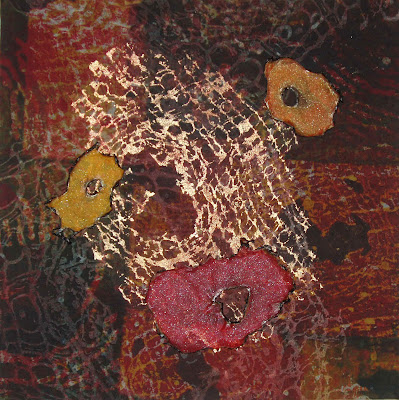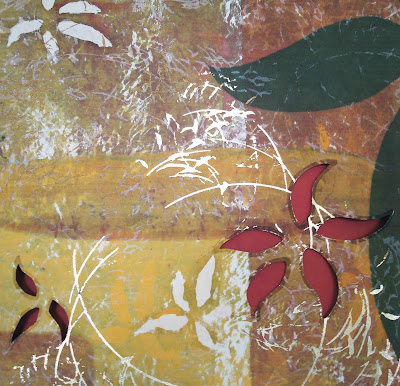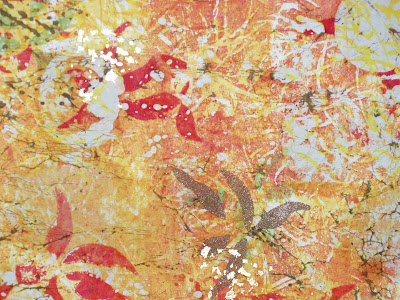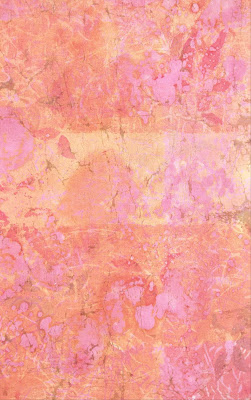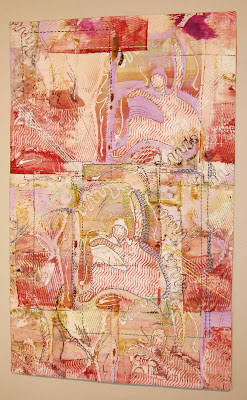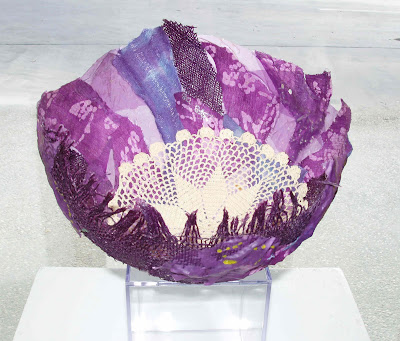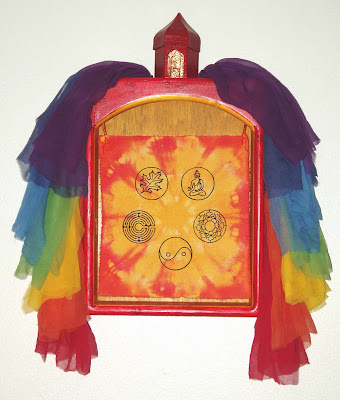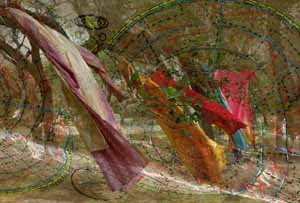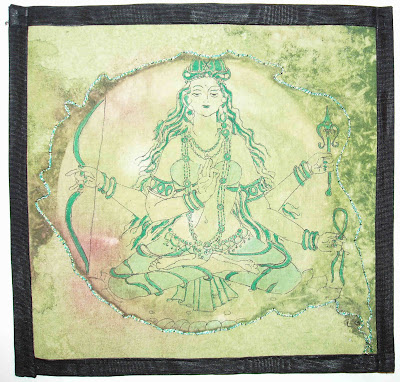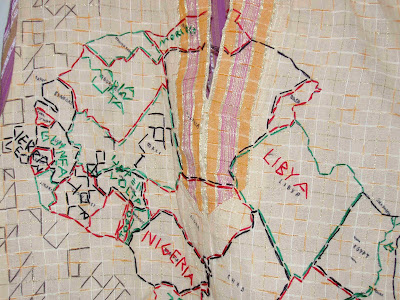I recently had the pleasure of working on a cloth that will be hung in the chapel of a local church. The chapel is a wonderful space, just next to the church's main sanctuary. It has a very warm, peaceful, welcoming feel to it. I feel honored that my work will grace such a beautiful, sacred space.
The photo below is my original drawing of the proposed cloth. The design went through a few changes, however the final result is pretty similar. The cloth was to fit with the theme of the scripture, "Be still and know that I am God."

I had envisioned using a gradation dyeing technique in which the center of the cloth would be bright yellow and would radiate out into oranges, peaches and pinks. However, when I saw the space in which it would be hung, I realized that it needed softer, more subtle tones to coordinate with the sandy peach walls. We also decided the cloth needed to be larger than the original plan. The single cloth was dwarfed by the high ceilings and 14 foot wall of the chapel. So, we agreed upon having three panels, each 48" x 32".
I worked on this cloth in much the same way I work on most of my pieces. I set my intention for the cloth and each day, before I worked on it, I meditated on that intention. My intention for this cloth was that all who looked upon it would feel the light, love, peace and joy of Spirit. While I had a plan, after studiously testing color samples and design possibilities, I remained open to any messages from my intuition while I worked. This did result in a slight color change from the original plan.
Below is a photo of the finished cloth. It will soon be hung in the chapel and I'm looking forward to seeing it in that space!

